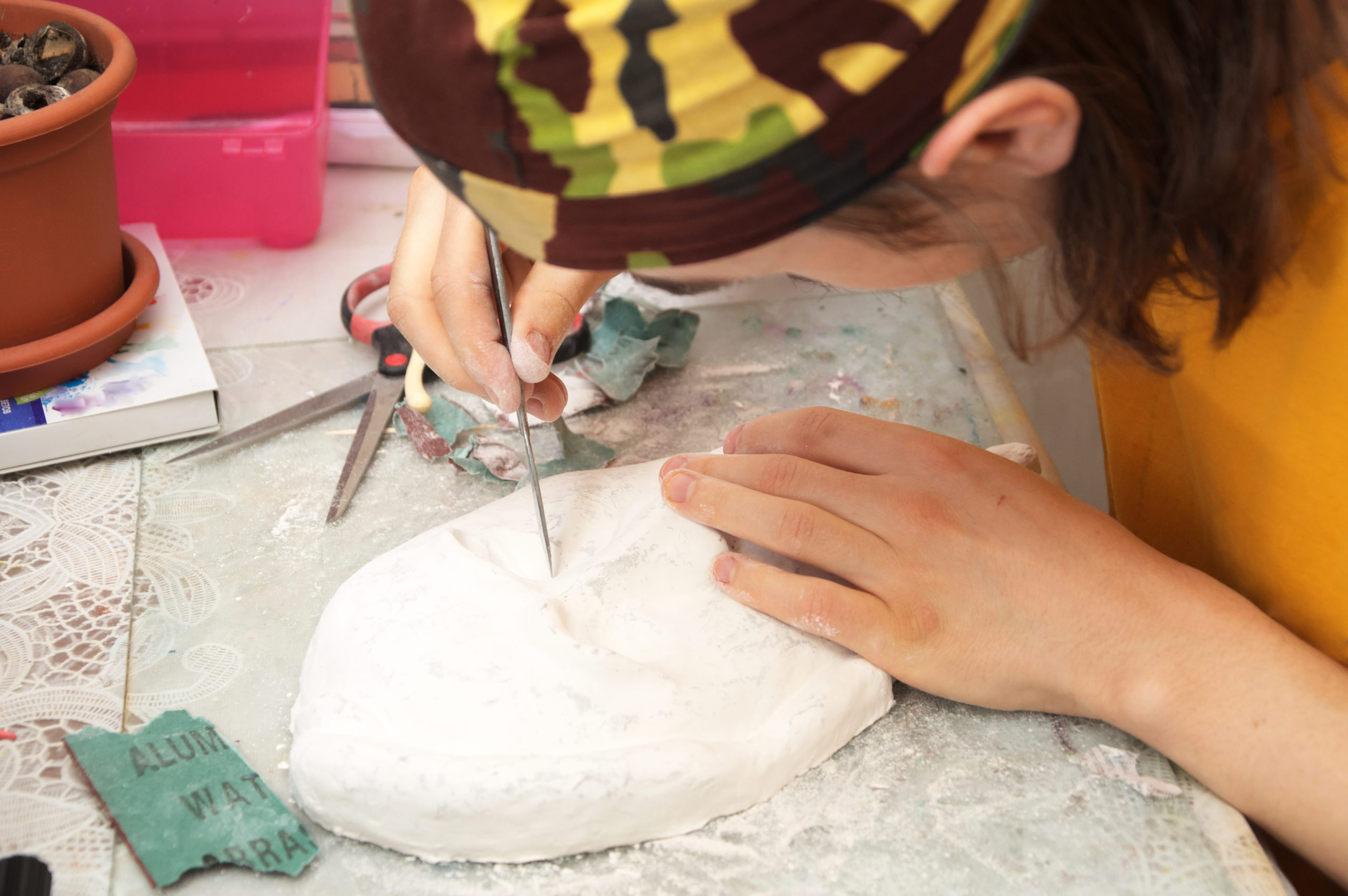A client of a prominent east coast drug and alcohol rehabilitation facility bounced into group one morning eager to share the arts and crafts project she had been assigned to complete the week prior. Clients were given blank paper mâché masks and access to a supply cabinet stocked to the gills with basic craft supplies and asked to visually represent the face they show to the world on the outside of the mask, and what’s really happening within on the inside of the mask. With her mask tucked safely inside a paper bag, she allowed her fellow clients to show off their designs as they narrated the creative process behind their inception.

One by one, clients trotted out their creations, some abstract or cartoonish in appearance, others painstakingly crafted in their owner’s likeness, but all with some version of darkness or chaos lining their interiors. One was a study in black and white, unadorned on the outside and caked in globs of black tempera on the inside. One client, instead of painting the mask at all, chose to cut it to pieces that she let flutter to the floor with a dramatic flick of the wrist.
When it was finally her turn, she giddily unveiled her masterpiece – the Mona Lisa of rehab mask projects – hand painted to match her exact skin tone and the muted greens of her irises, complete with adhesive drug store eyelashes and finished with long shanks of blonde hair cut from a $40 wig overnighted courtesy of Amazon Prime just for the occasion. This was the face she had become accustomed to showing the world — one of perfection in the details while she skillfully concealed the 24/7 pandemonium that took place behind the scenes. Thus, in contrast to the flawless exterior, the inside of the mask resembled an elaborate high school science project – the architecture of a brain bedazzled with chaotic bursts of color, sparkling gemstones, and Styrofoam eyeballs projected in 3D by curlicue pipe cleaners.
Art Therapy Reveals the True Self
Welcome to the world of art therapy, my friends. That client was me, and I unwittingly gave my therapist a treasure trove of information to unpack and process over the following few weeks with one simple display of creativity. Where I may have been unable to express through my command of the English language the existence of my obvious perfectionism, much less its origin, my mask spoke volumes about my state of mind and gave my treatment team a roadmap to my psyche.
How Art Therapy Plays a Role in Addiction Recovery
According to the American Art Therapy Association (arttherapy.org, 2017), art therapy can be used “to improve cognitive and sensory-motor functions, foster self-esteem and self-awareness, cultivate emotional resilience, promote insight, enhance social skills, reduce and resolve conflicts and distress, and advance societal and ecological change.”
When utilized in conjunction with a drug and alcohol treatment program, artistic exploration gives clients the opportunity to express themselves through visual and symbolic mediums and communicate in ways that enhance traditional talk therapy. In its traditional application, art therapy is conducted by a master’s level professional whose training has prepared them for the highest ethical standards and culturally proficient work with diverse populations.

Creative expression has become a cornerstone of modern rehabilitation programs, giving clients a multi-dimensional platform for exploring the more obvious as well as previously uncharted facets of their emotions, thoughts, and feelings. Using both traditional and unconventional mediums, clients can communicate in a holistic way that enhances their wellbeing by reducing stress and depression, bolstering self-esteem, and providing a creative outlet.
As a bonus, creative expression is often the highlight in a day that is otherwise filled with introspection and the hard work of recovery.
What to Expect in an Art Therapy Session
Art therapy and creative expression take many forms, from conventional paint on canvas and pencil on paper, to song and dance, sculpture, vision boards, graphic journaling, roleplay, and mural design. For many, these sessions will be the first time one has explored the arts in sobriety which can feel both intimidating and empowering.

While working with clients at the drug and alcohol rehabilitation center of which I am the Creative Expressions Director, I am often met with resistance by those who have never explored the arts, don’t consider themselves creative, or whose only artistic frame of reference is inexorably linked to using.
I encourage them to discard their preconceived notions of artistic pursuits and lose themselves in the process. We begin with an open mind and ask that they allow the process to be directed by the same higher power that we ask to direct our recoveries. Often, those who think themselves the most artistically challenged produce the most introspective, insightful pieces.
The Benefits of Art Therapy
The benefits of art therapy and creative expression far outweigh the client’s initial discomfort at having to reach beyond his or her safety zone. These sessions help to:
- Improve self-management by learning to focus and work within a discipline.
- Alleviate depression by lowering the heart rate and bolstering dopamine levels.
- Improve communication skills.
- Enhance problem-solving skills.
- Build self-esteem.
- Mitigate pain, stress, and irritability.
- Provide a positive distraction.
I personally witnessed the transformation of a client who had, prior to entering treatment, never touched a guitar without first getting high. She was a songwriter who penned dark tales of woe while under the influence and was petrified to unlatch her guitar case in front of her fellow clients. With a great deal of positive encouragement, she plucked through her first song sober and immediately burst into hot, fat tears. She did it!

She performed in front of a live audience without spontaneously combusting, and at that very moment she created a new, sober frame of reference in her chosen art form.
Music with Maddie* was born and became a regular addition to the weekly schedule. Maddie wrote several original pieces about the journey from addiction to recovery, and after she successfully completed treatment, she flew to California to audition for a nationally televised talent show.
I’ve seen clients pick away at the edges of repressed trauma through guided painting projects. I’ve watched the most introverted clients blossom like May flowers during an improv session. I’ve seen wishes manifest into reality after a client enthusiastically shared the vision board that she was loathe to complete with the group. Clients have prepared entire meals for their housemates after serving as sous chef during one of my cooking demonstrations. There are those who have changed the trajectory of their recovery, their education, and their career based on projects we embarked on during our Friday afternoons that are entirely devoted to creative expression.
Art Therapy has a Lasting Impact
And that brings us back to the aforementioned mask project. That client explored her perfectionism through group and individual therapy, worked the magic of the 12-steps on it, and is proud to say that she now finds both growth and comfort in imperfection. It’s also what makes her a true believer in the transformative properties of creative expression in all its manifestations.
*name changed to protect anonymity
Jenny Weatherall is the co-owner and CEO of Eminent SEO, a design and marketing agency founded in 2009. She has worked in the industry since 2005, when she fell in love with digital marketing… and her now husband and partner, Chris. Together they have 6 children and 3 granddaughters.
Jenny has a passion for learning and sharing what she learns. She has researched, written and published hundreds of articles on a wide variety of topics, including: SEO, design, marketing, ethics, business management, sustainability, inclusion, behavioral health, wellness and work-life balance.


